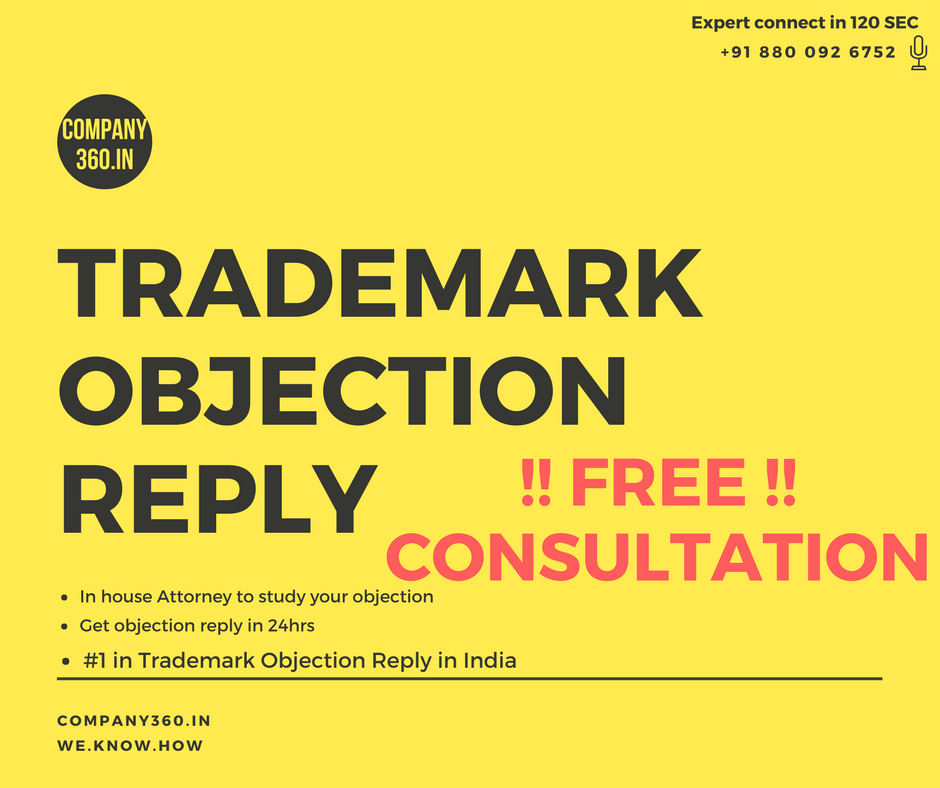
A mark that is capable of differentiating the goods and services of one person from another is called a trademark. A mark to be successfully registered must not be hindered any of the grounds of refusal or objections for registration. There are various grounds on which an objection to a trademark application can be raised. These grounds can be absolute, relative, etc. Section 9 of the Trade Marks Act, 1999 lays down the absolute grounds based on which a trademark application may be rejected. Section 9 lays down a bar on certain kinds of marks from registration. Section 9(1)(a) lays down that any mark that not distinctive such that it doesn’t distinguish the goods or services of the applicant from that of others cannot be registered under the Act. According to section 9 (1)(b), words of the common language, common words, names, and other descriptive words of general nature cannot be registered under the Act. Section 9(1)(c) excludes the purview of marks that are customary in language or followed in established practice or process of the trade from being registered under the Act.
The proviso to section 9 lays down two grounds that save the Trademark Objection under section 9. In the first case, the objection can be saved if the mark has been sufficiently used such that it has acquired a distinctive character before the date of application for registration. In order to overcome a trademark objection under section 9 (1)(a), it is sufficient if the applicant is able to satisfy that the mark has either an inherent or acquired distinctiveness. While scrutinizing a mark for its inherent distinctiveness, it must not be examined in relation to any special surrounding circumstance or to any extrinsic evidence of that circumstance. The mark on own its own must be able to differentiate the good or service of the applicant. The second ground that is excluded from the scope of section 9 on account of the proviso to section 9 is the case of a well-known trademark. A mark that has been well established in the market and has earned its reputation even before the registration of the same will not be hit by section 9(1)(a).
With regard to an objection under section 9(1)(b), it is well known that one must look into the fact as to how the mark is regarded by the public in their opinion rather than a strict grammatical interpretation to overcome this objection. The same was also reiterated in the landmark case, Keystone Knitting Mills Ltd.’s TM [(1928) 45 RPC 193]. In the case of an objection under section 9, the objection may be overcome and the mark may be registered if it has obtained a secondary meaning that associates itself to the product or service of the applicant. In case of a refusal to register the mark, the applicant is required to file a reply indicating that the mark shall be seen in the way in which it appears to the public at large and that shall not be taken in its strict grammatical sense. Yet another way for the applicant to prove that his trademark cannot be rejected is by proving that he has obtained the distinct character for his trademark before applying for its registration.
In Reddaway and Co Ltd v Banham and Co Ltd [1896] AC 199, the dispute between the plaintiff and defendant arose when the defendant began to sell belts made of camel hair while the plaintiff was already involved in manufacture and sale of camel hair belting. The House of Lords in this case held that “the term “CAMEL HAIR” was descriptive but had acquired secondary significance in the trade of business and had come to be associated with the plaintiff’s business and therefore is liable for protection.” This is in fact considered as a leading case law that talks about descriptive words having acquired secondary meaning. Further, the rule derived from this case law in fact forms an essential part of the Indian Trademark law.
In the matter concerning Godfrey Philips India Limited. v. Girnar Food and Beverages Pvt. Ltd [2005] 123 Comp Cas 334 (SC), the Supreme Court of India held that “A descriptive trademark may be entitled to protection if it has assumed secondary meaning which identifies it with a specific product or as being from a specific source.”
In Ishi Khosla v. Anil Aggarwal, it was time and again held that the trademark that is associated with the good or service need not necessarily have survived in the market for a few years to obtain distinctiveness. It was observed that there is no fixed period within which a trademark is said to have obtained distinctiveness. In the words of the Hon’ble Delhi High Court, “to acquire secondary meaning it is not necessary that product was in the market for the number of years. If a new idea is fascinating and appeals to the customers, it can become a hit in a day.”
In general, the best two ways to overcome an objection under section 9 of the Trademark Act is through:
-
The filing of an Affidavit of use indicating use prior to the application date by at least 2–3 years along with supporting documents i.e. invoices, advertising cutting, and internet extracts.
-
Prior Indian registration in the same class.
The above are some of the grounds that save a trademark objection under Section 9(1)(a) and 9(1)(b) of the Trade Marks Act, 1999.










